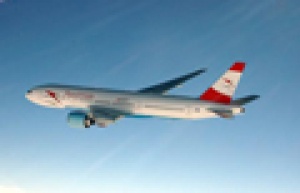Austrian Airlines A320 lands in Vienna

Austrian Airlines is harmonising its medium-haul fleet: Austrian crews and aircraft engineers today brought the first newly-leased Airbus A320, which will strengthen the fleet, from Montpellier in France to Vienna. The aircraft with the registration OE-LBI carries the name “Marchfeld” and is expected to enter into operation on 1st October 2012. Maintenance work is currently being carried out by the Austrian Technik team on two other leased Airbus A320, on behalf of the lessor. This means that three of the seven Airbus A320 should already be flying in the Austrian fleet by the end of 2012. It is planned to have all seven Airbus A320 operating by the summer schedule of 2013. In parallel with these additions, the Boeing 737-800 fleet is being withdrawn from flight operations on a step-by-step basis.
Preparation for duty with Austrian
As part of the acceptance process, a dedicated ‘Acceptance Team’ from Austrian Airlines was on the ground in Montpellier to ensure the aircraft was completed in accordance with contractual conditions. Amongst other things, these conditions included technical checks, monitoring of the aircraft’s papers, an acceptance flight with the owner, and a subsequent engine check. The livery had already been painted in the distinctive Austrian design while on site in France.
After the transfer, the aircraft is to be integrated into the maintenance programme by Austrian Technik, with smaller adaptations being carried out to the company standard the next few days. This is followed by incorporation into the Tyrolean Air Operator Certificate (AOC), which forms the basis for flight operations, and the official agreements this entails.
Austrian medium-haul fleet standardised
This measure is an essential component in the restructuring programme of Austrian Airlines: Homogenisation of the company’s fleet of medium-haul aircraft will make it possible to achieve savings in operating costs in future (no twin-tracking in the costs of maintenance or spare parts, and standardised training for pilots), and to deploy the aircraft more productively in network planning.

